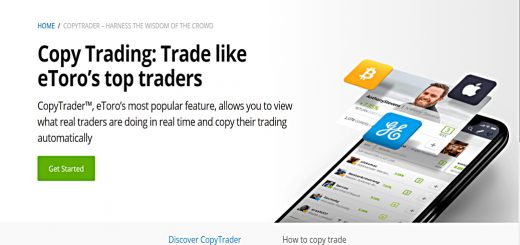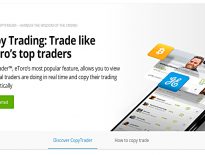Social Trading Revisited

Today’s post is another look – after a gap of six and a half years – at social trading.
2015
Back in 2015, I was trying to get back into trading after a gap of more than a decade.
I had traded for years before the dot com boom, but I stopped for three reasons:
- as my portfolio grew relative to my income, I became uncomfortable with the volatility and potential downside
- I was too busy with work and then with my father dying
- markets that were bad in the early 2000s, and then difficult to predict (though ultimately benign) after 2008.
Like most people, I had no experience of low interest-rate, low growth markets, dominated by central bank policy, but by 2015 I felt like I was ready to get started again.
- I had the time, and the trading tools available to private investors had improved a lot.
But we still had low-interest rates, and the central banks were in charge.
- And my portfolio was even larger, so low volatility was still a priority.
For some reason, I thought that I could construct a low-vol approach to social trading.
Social Trading
I came across the concept of social trading (now generally known as copy trading) at an investor show in 2012.
- A £20 eToro voucher was included in the event goody bag, but I didn’t use it.
The idea is that you follow several other “expert” traders, allocating your capital between them.
- When they trade, the platform automatically copies their trades for you.
Back in 2015, the main products traded were FX pairs, indices and commodities.
- Today, tech and meme stocks and crypto can be added to that list.
In theory, this is an attractive product – additional sources of returns (small-scale 3rd party traders, FX and index trading) with moderate effort and potentially some fun along the way.
- Whether it works in practice is another thing – can you find traders to follow who offer a consistent “product” rather than excessive risk-taking in pursuit of large short-term profits?
Survivorship bias is a big problem.
- And with margin trading (leverage), blowing up your account is always a possibility.
Platforms
Back in 2015, I used socialtradingguru.com to identify that there were an amazing sixteen social trading platforms available in the UK.
Pre-requisites for me were:
- demo account available
- automated trade copying
- lots of traders to follow
- trading in £, or at least in $ or €
- low minimum account size
This was enough to get us down to four platforms :
- ZuluTrade
- eToro
- Ayondo
- Tradeo
Six years on, eToro is the clear market leader, and I will start there.
- I no longer need a demo account, and eToro trades only in $, but it ticks the other three boxes.
Black Swans
There are a couple of reasons why I didn’t get started with Social Trading in 2015.
- The first was that I still had tax shelters to fill – one of the big drawbacks of social trading is that gains are taxable (another is potentially high trading costs).
Six years later, and with a little help from the impact of Covid lockdowns on my spending, I have some spare cash to experiment with.
The second issue was a Black Swan event in the FX market.
Lewis Robinson of Expecting Value wrote about the removal of the Swiss Franc peg against the Euro in January 2015, which illustrated the dangers of crowdsourcing.
- A Swiss Franc trader from ZuluTrade was unprepared for the removal of the peg.
His account was wiped out, impacting all of his followers (copy traders).
This strategy of small gains from betting against a looming catastrophe is also known as “picking up pennies in front of a steam roller”.
- The most famous example of this approach is probably the hedge fund Long Term Capital Management (LTCM).
LTCM was founded by Salomon Brothers bond trader John Meriwether and was run by Nobel Prize-winning economists.
- LTCM used 200x leverage and blew up in 1998.
So we need to guard against this kind of thing, using a couple of techniques:
- Diversification – we’ll aim to copy between 20 and 50 traders
- Trend-following – we’ll choose strategies with momentum, and use stop losses based on the volatility of the trader’s track record
Sign up
The eToro sign-up process was pretty straightforward.
After choosing an account name and password, and supplying your address and national insurance number, you are asked about your experience:
- How many stock trades in the last year?
- How many crypto trades in the last year?
- How many leveraged trades in the last year?
- How much did you invest in leveraged trades?
- What level of trading knowledge do you have (with a practical question)?
Next, you get to say which instruments you plan to trade:
- Stocks
- Crypto
- Currencies
- Commodities
- Indices
After that comes “trading strategy”, by which they mean how long you plan you leave your trades open.
- Then they ask what the purpose of your trading is.
- And how much you plan to deposit over the next year.
Then you get to choose a risk profile from five options, and then you verify that you don’t work for a brokerage, you aren’t a director of a public company and you aren’t a public official.
- Next, it’s the source of funds, occupation (including your employer) and income and assets.
And then your phone number.
Finally, we are in.
Funding and fees
eToro has largely done away with trading commissions, but it has four types of fees to be aware of:
- Spreads, measured in percentage terms, according to the instrument being traded
- Overnight fees on the money you are being loaned, if you use any leverage
- A $5 withdrawal fee, so make sure to withdraw in large chunks
- FX fees, since the eToro platform runs entirely in dollars
- This is not too bad over the long term, as the fee is only charged on deposits (and withdrawals), but it’s annoying when setting up a new account.
For copy trading, spreads and overnight fees will (I think) be hidden inside the returns from the traders we copy, so I’ll be looking at these as the ongoing charges of the “actively-managed funds” we are buying into.
- That said, I doubt we will be able to see what these costs have been on a historical basis.
I managed to get around the FX fees by using a dollar balance in my PayPal account.
- In fact, this avoided two sets of fees as PayPal would have charged a lot to convert these dollars into pounds.
The minimum copy size is $200, so copy a reasonable spread of 20 traders, you would need to deposit $4,000.
- If you also wanted to add in some of the ready-made thematic portfolios, at $1,000 minimum per portfolio, then perhaps $10K would be a better account size.
The maximum number of traders that you can copy is 100, which would require at least $20K in your account.
That’s it for today – after more than six years, I’ve finally opened an eToro copy trading account.
- I’ll be back in a couple of weeks with a look at how we can select which traders to copy.
Until next time.

















